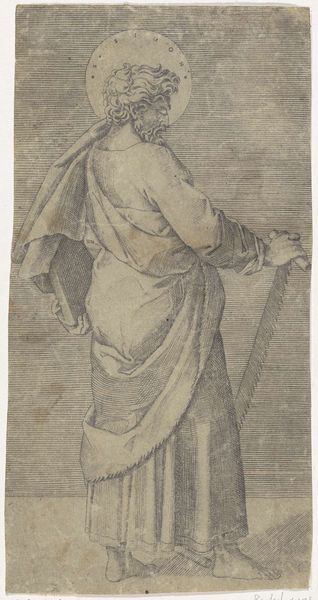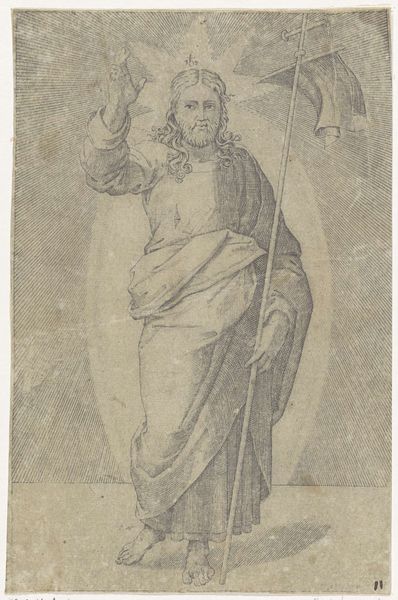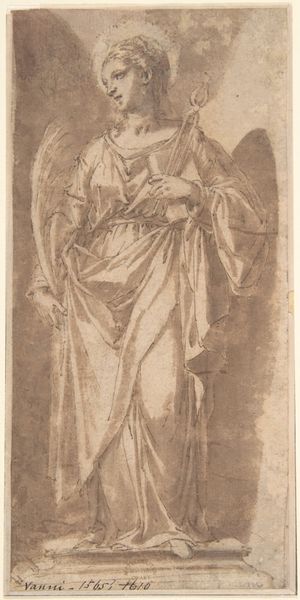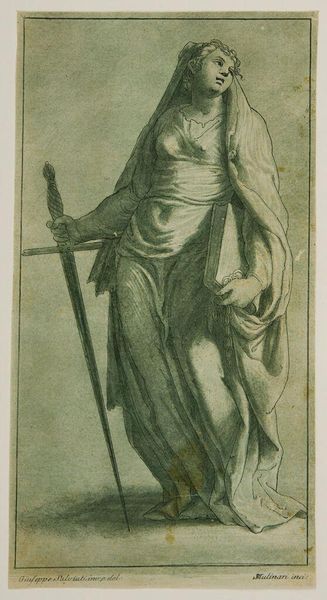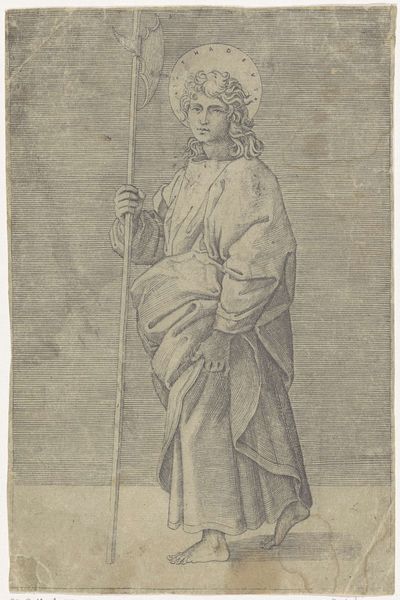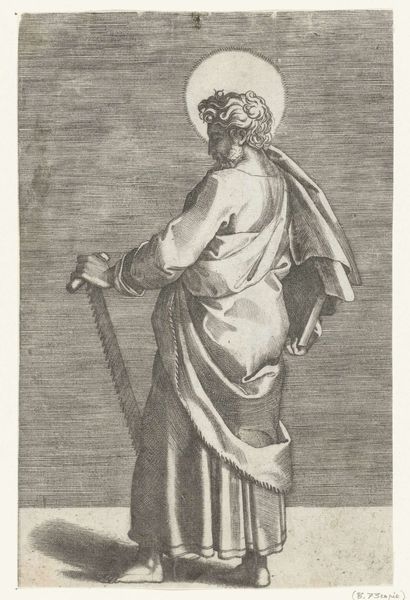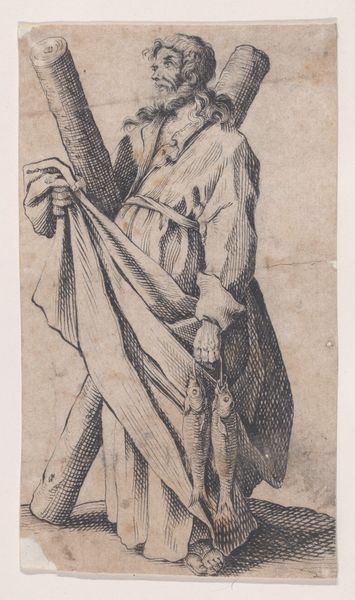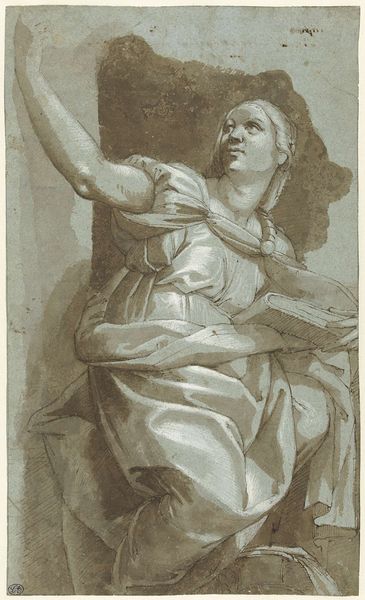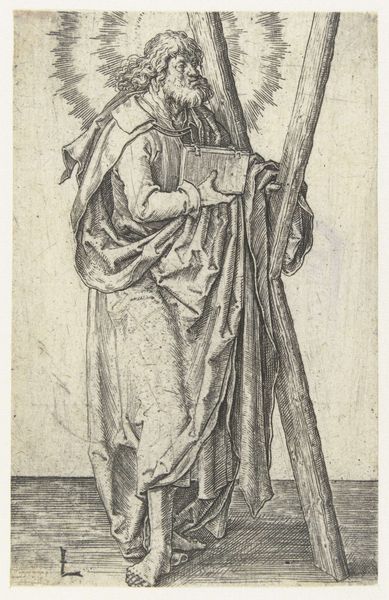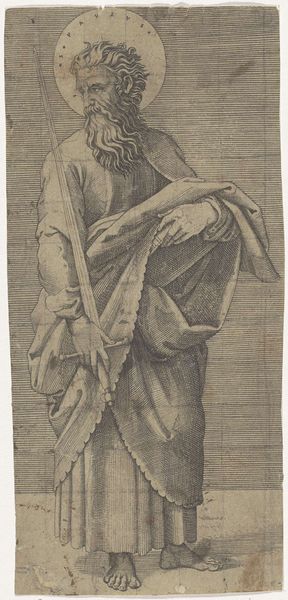
Apostel Jakobus de Meerdere (Major) met pelgrimshoed en pelgrimsstaf 1517 - 1527
0:00
0:00
print, engraving
#
portrait
#
pencil drawn
# print
#
figuration
#
pencil drawing
#
line
#
sketchbook drawing
#
academic-art
#
italian-renaissance
#
engraving
Dimensions: height 210 mm, width 139 mm
Copyright: Rijks Museum: Open Domain
Editor: So, here we have "Apostel Jakobus de Meerdere (Major) met pelgrimshoed en pelgrimsstaf," an engraving by Marcantonio Raimondi from the early 16th century. There's a somber mood, the lines create this haunting figure... How do you interpret this work? Curator: Raimondi's depiction of St. James is fascinating when viewed through the lens of the Reformation brewing during this period. Notice how he is portrayed as a humble pilgrim, staff in hand. Consider the rising tide of religious reform questioning the Church's power. Could this image be interpreted as a subtle commentary on the ideal follower of Christ, one focused on simple devotion rather than opulent displays of faith? What does this tell us about the role of the artist during a major turning point in cultural identity and values? Editor: I see what you mean. The simplicity contrasts with the Church's grandeur. Curator: Exactly. It challenges us to unpack the complex intersection of religious piety, artistic expression, and socio-political critique in the Renaissance. How might different viewers, say a wealthy patron versus a peasant, have responded to this image? Editor: That's a really good point! I hadn't considered how the message would change depending on who was viewing it. Curator: Thinking about audience and intention allows us to consider it less as a simple religious image and more of an artwork deeply engaged in its time. Considering issues of power and faith. It opens up broader questions about how art can reinforce or subvert dominant narratives. Editor: I’m seeing layers that I hadn’t before. Thank you. Curator: My pleasure. Remember that all artworks are born of specific contexts, understanding those contexts breathes new life into them.
Comments
No comments
Be the first to comment and join the conversation on the ultimate creative platform.

